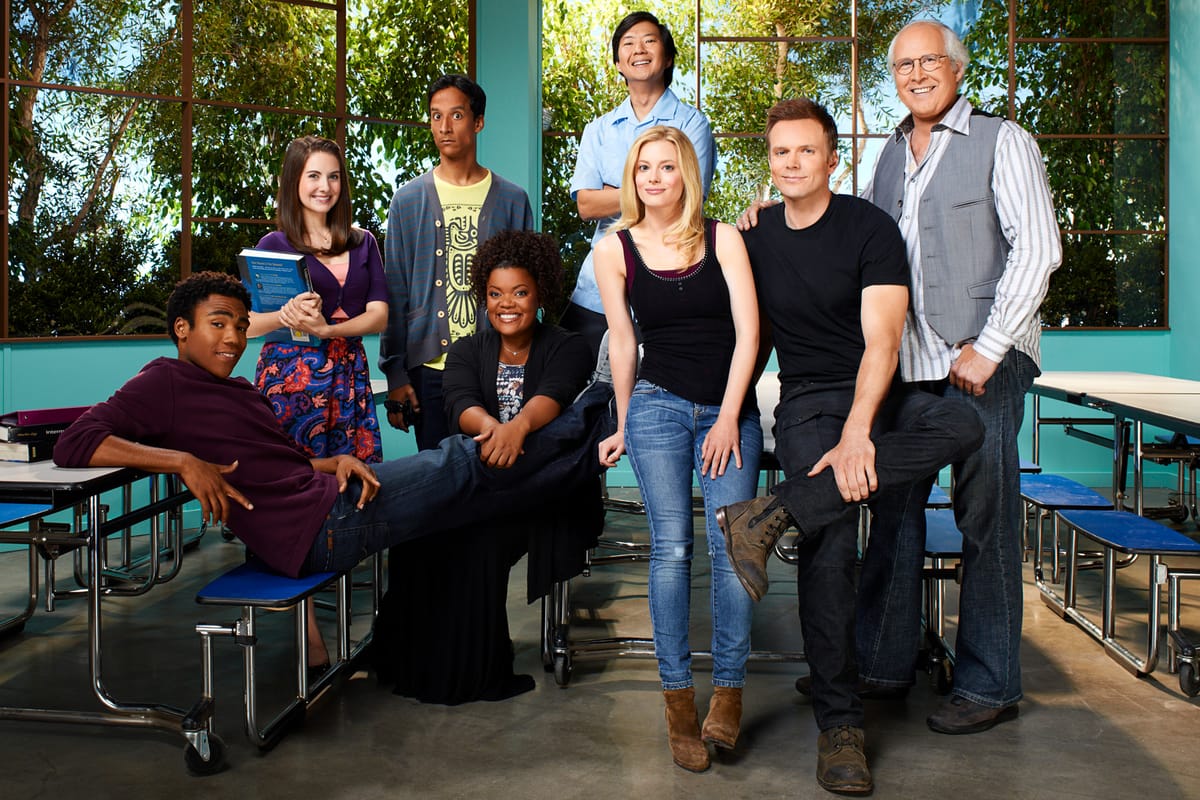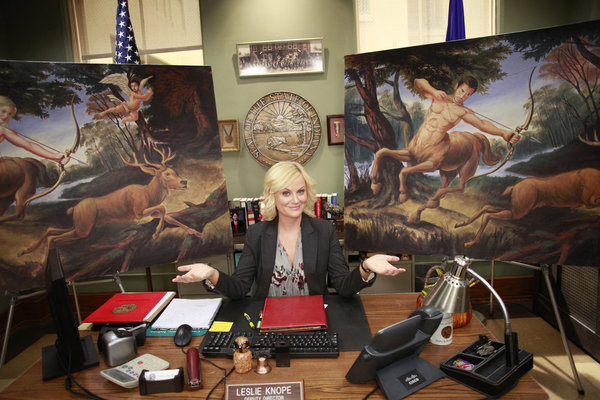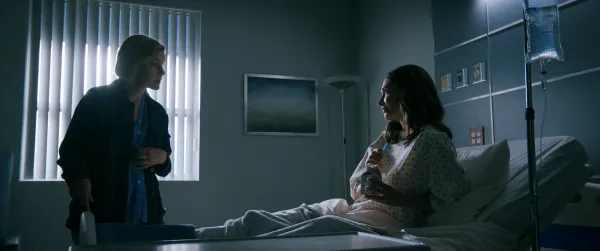Parks & Rec or Community
THERE CAN BE ONLY ONE

Recently for whatever reason — i.e., I have been posting about it on Twitter and antagonizing various friends about it — I have become invested in answering the hottest question of 2011: Is Parks & Recreation or Community the better show?
On a practical level, I’m interested in this because various friends are weighing the two against each other for assorted end-of-decade lists. I have restricted myself only to shows that debuted in the 2010s and, as such, won’t have either on my list. (I’m also going to be sans my actual top two shows of the decade — Mad Men and Twin Peaks — but these are the sacrifices I make for my art.) But I’m fascinated to watch the thought process that goes in to most people wrestling with whether either show belongs on the list, then which should be higher than the other.
The consensus choice is, it would seem, Parks & Rec. And I understand that choice. It was a more consistent show, and it makes a lot of people wistful for the Obama era (which dovetails nicely with the theory I outlined in this article), and it has a tremendous ensemble cast. It is, no doubt, a great TV show, especially at its peak. And if we’re comparing the two show’s nadirs, Community’s worst episode is substantially more terrible than Parks & Rec’s worst episode. Even in its worst seasons, Parks never dipped below “pleasant.”

Pleasantness is an admirable quality in a long-running TV show, too. If you’re going to run for seven seasons, better to not actively antagonize the audience, as Community at times seemed intent on doing. Parks & Rec is also a more bingeable show because of that consistency, and because it’s frequently been available on Netflix, while Community has languished on Hulu (or maybe was a more niche show to begin with). Parks is easier to watch with your kids. Parks mastermind Mike Schur has gone on to co-create the much loved Brooklyn Nine-Nine and outright create the critically heralded The Good Place. Community’s Dan Harmon co-created Rick and Morty, a show critics really like but never one that has caused hosannas.
Parks is, in a word, just a nicer show. The chief argument in its favor is that week after week, it created a world those who love it wanted to move in to. It’s an argument that I’ve advanced myself a few times, and I certainly have sung the praises of the show many times across my career. Making a highly enjoyable TV series for seven seasons — and enduring cancellation rumors throughout — that’s a difficult bar to clear. But Parks set a very high bar for itself somewhere in its second season and cleared it over and over again, only occasionally rattling said bar.
The case for Community essentially hinges on if you believe that what’s most important in a TV show is pushing the bar a little higher with every successive week. You sometimes got the sense that when the show turned out a flop episode, it wondered if all involved might start over, might return the bar to its initial position, before some dark and terrible demon took the bar and raised it not just another quarter inch but a whole foot. When the show was good, I would say it was among the best TV shows ever made. When it was bad, it failed spectacularly. I preferred Community at its best very slightly to Parks at its best. I will not pretend that Community at its worst was even watchable television.
Also in Community’s corner if we’re talking intangibles is that it was, joke for joke, a funnier show to my mind, and it was inventively directed on a TV budget (no easy feat). It, too, had an all-time great ensemble cast — one I probably prefer slightly to the Parks ensemble — and if push comes to shove, it had a better theme song, too.
So considering all of the above, the answer, to me, is starkly clear: Community. And not for the reasons you think.
Somewhere in 2013 or 2014, I was talking with a friend from back home in South Dakota, and they were expressing their frustrations with being able to get in to Parks & Rec. It was at a point in time when I had soured a bit on the show and was trying to understand why. In an essay I wrote for The A.V. Club, I chalked it up to Leslie Knope being a character whose centrality to the series went so unquestioned that she encountered only cartoonish opposition. Characters meant to be set up as foils to her — like Ron — were now her BFFs, and that meant the show’s antagonists were all random characters airlifted in from other, much worse shows. (Councilman Jamm is the foremost example of this.)
To its credit, Parks pulled out of this tendency, giving Leslie some real personal stakes after she lost her city council seat. But for me, the eternal symbol of the show’s struggles to give Leslie something to fight against post-season three came in the season four storyline where she has to choose between her career and a budding romance with Ben, only to abruptly be given both in rather unrealistic fashion. (I am also not a huge fan of the Ben/Leslie pairing, but I accept that this is because I hate love.)
Anyway, I explained some version of the above to my friend, and he said that no, it wasn’t that. It was that he felt sometimes like the show hated him.

That was an idea I struggled with initially. If nothing else, I thought, Parks had an enormous heart that encompassed all of its characters. Right? Like that’s the show’s whole thing. Right?
And it is the show’s whole thing — provided you only look at it through the perspective the show presents you with. Within the limited point-of-view of the show itself, we see the hard-working public servants of the parks department of Pawnee, Indiana, who do their damnedest to keep the little town rolling along. But when they come into contact with the actual citizens of Pawnee, those characters are usually painted as buffoons at best and actively horrible people at worst. The “Leslie encounters cartoonish opposition” problem I had diagnosed had swallowed the entire show. Niceness within the world of Parks & Rec is intended for a select few. Everybody else gets shit on. (This is a dynamic that even plays out within the main cast in re: Jerry, something that Schur himself has pointed to as a place where the show had to walk the line in not making those gags too unbearable.)
Now, obviously, you can do a show where part of the series’ central message is that everybody is awful. The Simpsons, an obvious forerunner of Parks, did this all the time. But what The Simpsons managed that Parks too often forgot stemmed from how the core Simpson family was just as bad as anybody else in Springfield when push came to shove — Lisa included. Similarly, Newhart (another clear forerunner) made the small town at its center full of kooky oddballs — but then it suggested the protagonist and his wife were just as kooky and just as odd.
For me, Parks too rarely executed this shift. The core characters were too often portrayed as better than Pawnee, as above the average Pawnee citizens. I don’t think this is the sort of problem the show can’t survive (I still love this series, after all!), but it did tarnish the show just a bit to see it through my friend’s eyes. In his view, the characters of Parks would look down on him because of various cultural shibboleths tying him to slightly poorer rural demographics, even though as an enthusiastic Hillary Clinton supporter, my friend would likely be a core Knope voter.
It would be one thing if Clinton had won the 2016 election. Then a lot of these tendencies within Parks would be easier to ignore. But she didn’t, and the show’s easy dunking on the citizens of Pawnee curdles a little more every time I watch the series. If there really were a Pawnee, Indiana, would anybody there watch this show? What ratings data we had suggested it was way more popular on the coasts than in middle America (though I would guess streaming has shifted that).
Parks now seems to stand for a relentlessly cheerful and elitist centrism. Again — not the worst thing in the world to build a TV show around, but you really have to know that’s what you’re doing (as on, say, Veep, another show told from that basic political point of view but one that dug in its heels and chose to present the worst sides of its characters). Parks got so lost in its idea of a nicer America that it developed huge blind spots when it came to the ways it actually depicted America.
Say what you will about Community, but it was a show that relentlessly critiqued and interrogated (most of) its blindspots. It missed some here and there, and there are story elements that have aged incredibly poorly (the Jeff and Annie stuff was gross then and is even grosser now). But it was a series that understood just how terrible everybody within its world was, which made it easier to show how they could be good to each other, too. I love Parks, but even at their wickedest, its characters were an exercise in cutesy sloganeering. For me, that gigantic blindspot loses the battle that then loses the war.
Read me: Speaking of small-town America, this Washington Post profile of a South Dakota farm family grappling with mounting debt in the face of the husband and father taking his own life in June is gut-wrenching stuff. Reporter Annie Gowen has thought about how to tell this story with sensitivity while not looking away from its darker sides, and she has a keen eye for when to step back and take the longer view. There’s also some phenomenal art. It’s an excellent piece.
Platte Christian Reformed Church has a stone tablet featuring the Ten Commandments on the lawn, a parking lot full of white pickup trucks and a young pastor, Drew Hoekema, who struggled with what to say to his congregation after Chris’s suicide. He finally settled on “he’s in God’s hands now.”
Amber has clung to her spirituality since her husband’s death, posting her favorite Bible verses and inspirational quotes on Facebook. She seems serene in her hope that God will provide, even though she made only $18,056 from her part-time job at an insurance company last year and no money from her hobby selling a direct-marketing makeup line.
“There’s no way anybody can walk this walk without faith,” she says. “I don’t know how someone could. There would be no hope. None.”
Even her daughter, Kalee, has asked, “Mom, how is this going to work?”
Watch me: There’s one great small town sitcom I haven’t talked about at all in this article: Green Acres. If you’ve read me at all over the years, you know I’m all too happy to wax rhapsodic on this show at the drop of a hat. It’s one of the most inventive sitcoms ever made and has a surrealist streak that holds up remarkably well. You can stream it on Prime Video, and if you want a little taste of what to expect, check out this great piece from Decider’s Brett White.
And another thing… If you enjoy watching me do things, I’m taking part in a new RPG campaign via my good buds at Happy Jacks. The campaign will be using one of my favorite systems — the teen superhero game Masks. I’m playing the intrepid Katy Kidd, the Klipspringer, and I’m so excited to be playing with some of my favorite players. You can stream the whole thing both on Twitch and on YouTube. Our first actual session is this Wednesday, but you can watch our character development session here.
This week’s reading music: “Merry Go Round” by Kacey Musgraves
Episodes is published once per week and is about whatever I feel like that particular week. Suggest topics for future installments via email or on Twitter. Read more of my work at Vox



